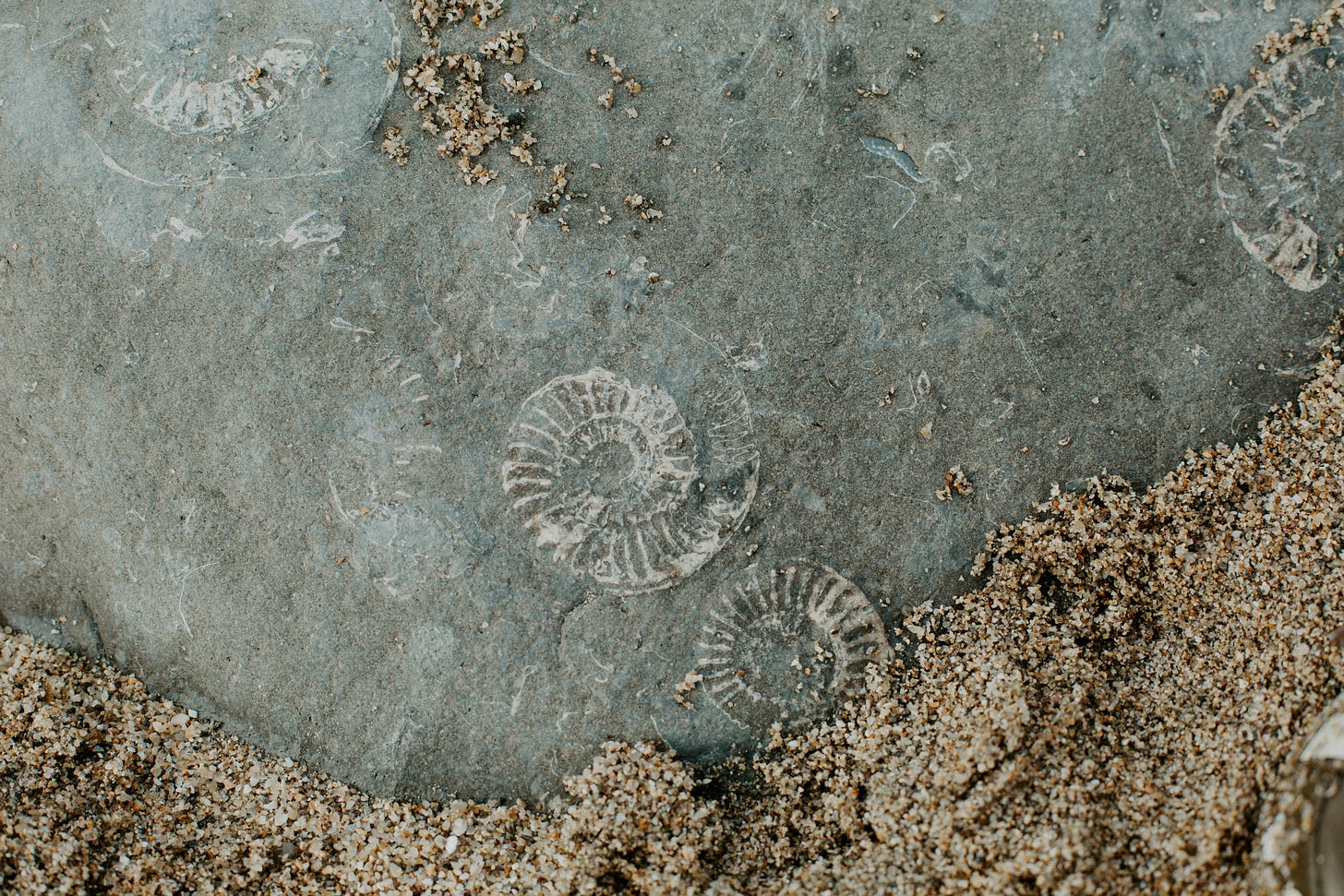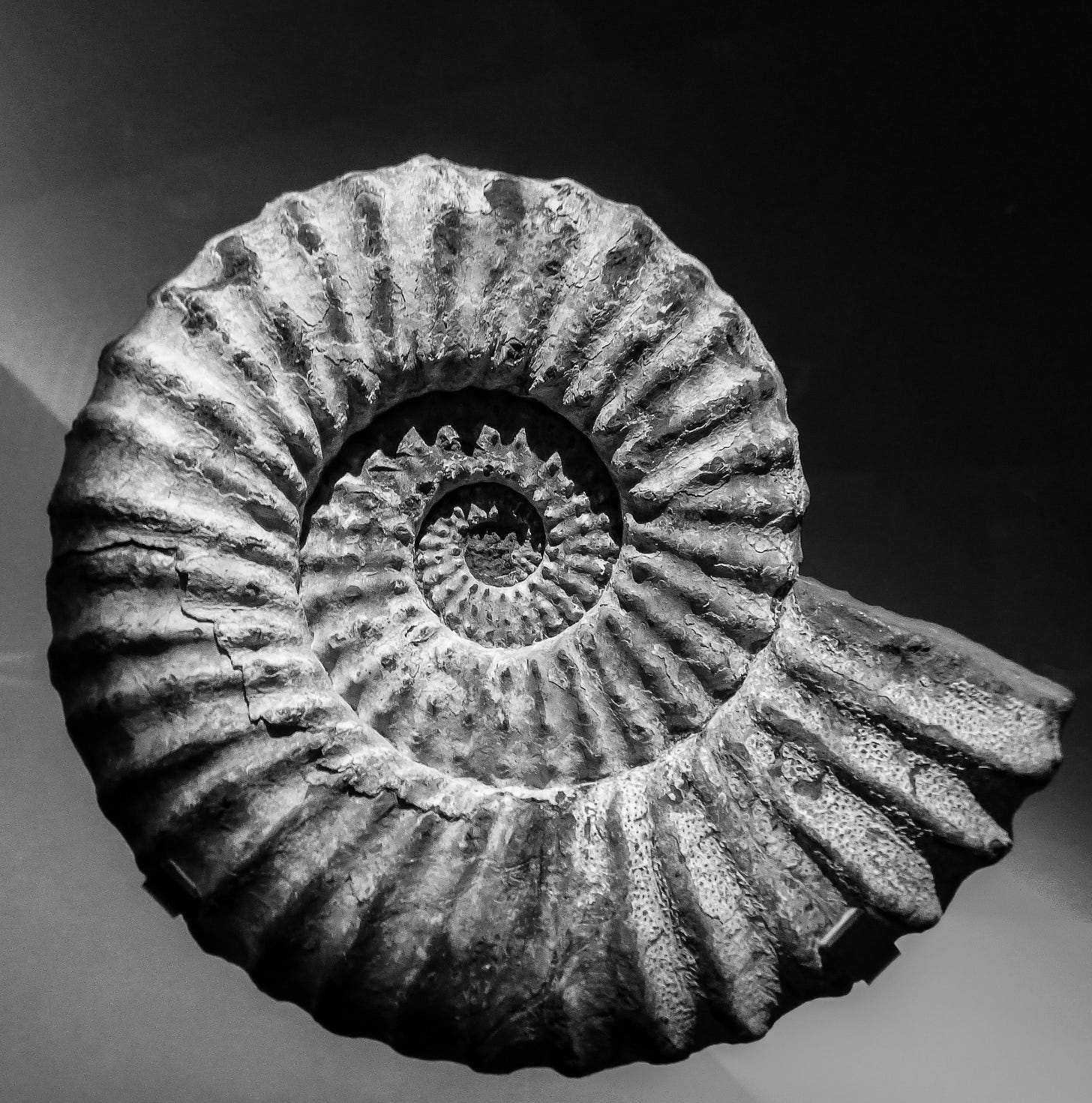Fossilised selves: animate language as collective care
After Robin Wall Kimmerer and María Puig de la Bellacasa
Did you ever make up a name for a non-human being as a child?
What were the first sounds your mouth and tongue used to describe a blackbird or a dragonfly? A dog? A rainbow?
What sounds did your body make before you were told its ‘real’ name?
Lately, I have been turning over and over the word for ‘rainbow’ in Tagalog—the language of my heritage—relishing the soft, agape way it rolls around my palate and against my lips as if tasting a rare wine.
Bahaghari.
Saying this word feels like my true self.
The word Bahaghari denotes the colours used in native Philippine textiles: colours perceived as precious, enriched, extraordinary, and intrinsically natural. The meaning also derives from Malay and Sanskrit influences.
Making new friends as an adult is hard. Particularly so in a climate of austerity and multiple crises. But, it felt like a tide had turned when, recently, a new and special friend of mine weaved together strings of red, white, green, and yellow to make me a friendship bracelet. The beads on this bracelet outline what I long for: ‘Roots’.
For those of us who have multiple, intersectional identities, language can be a home.
When important parts of our identity are hidden or obscured by our lived reality and the society we find ourselves in, languages that are familiar, empowering, or comfortable to us can help to create a buffer between our true selves and the world.
For me, living in this time feels like being a fossil. Entrenched and stuck in a time of ancient, unskilful ways of relating and speaking—waiting for some caring eyes to gaze upon me from a more tender future. Eyes that see me as I really am, rather than this limited, squished, two-dimensional version of myself, as required by my circumstances and societal context.
They might recognise how my full-bodied self had been entrapped, pressed down by hundreds of layers of oppressive rock and soil over a lifetime.
I want someone to unearth me.
To bring me back to flourishing life, like how some scientists are trying to re-animate megafauna, including the ibex, auroch, and mammoth.
In Matters of Care: Speculative Ethics in More Than Human Worlds, philosopher María Puig de la Bellacasa argues that human and non-human entanglements and inter-dependencies require us to acknowledge more-than-human care and this noticing elucidates more nourishing, sustainable ways of relating to one another.
As Puig de la Bellacasa poignantly notes, ‘…[C]are is relational per se. Caring and relating share ontological resonance…Tronto’s generic definition of care says this well: care includes “everything that we do to maintain, continue and repair ‘our world’…which we seek to interweave in a complex, life-sustaining web” (Tronto 1993). This vision…speaks of care as a manifold range of doings needed to create, hold together, and sustain life and continue its diverseness.’ (Matters of Care, p.69-70)
‘Standing by the vital necessity of care means standing for sustainable and flourishing relations, not merely survivalist or instrumental ones.’
— María Puig de la Bellacasa, Matters of Care.
Words make stories and stories make worlds. As Robin Wall Kimmerer has poetically expressed many times, the language we use matters—and to move towards a healed relationship with the more-than-human world we must animate our language.
In Kimmerer’s essay ‘Learning the Grammar of Animacy’, she explores how re-learning her indigenous language has healed and reshaped her lived experience of the world and deepened her connectedness to nature. As Kimmerer writes:
‘My first taste of the missing language was the word Puhpowee on my tongue. I stumbled upon it in a book by the Anishinaabe ethno-botanist Keewaydinoquay, in a treatise on the traditional uses of fungi by our people. Puhpowee, she explained, translates as ‘the force which causes mushrooms to push up from the earth overnight’. As a biologist, I was stunned that such a word existed…In the three syllables of this new word I could see an entire process of close observation in the damp morning woods, the formulation of a theory for which English has no equivalent. The makers of this word understood a world of being, full of unseen energies that animate everything.’ (Learning the Grammar of Animacy, p.3)
Both Kimmerer and Puig de la Bellacasa point to an undeniable truth: in order for our world to become more livable for all, we must animate our perception of the ‘other’, including non-human species.
Using language that brings us more aliveness and animates the world around us is an act of care in a system built for othering: one that is hostile toward humans and non-humans alike. To care is an act of inter-being. We weave new relationships and ways of relating through caring about someone or some being.
Language plays an important role in either entrapping or liberating our world. We care by using more tender language. Through a language of care, we can unearth and bring to life the fullness of a being. The first step is simply pausing before we name them.
So, my invitation here is to rediscover that word which enlivened the world for you. What was a particular word or language that gave your heart and body an increased sense of aliveness?
Who might you bring back to life through your language?




